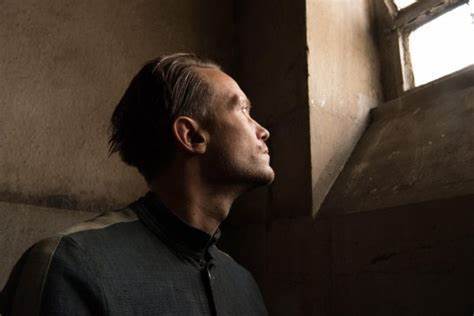Kathryn Griffin Swegart's Blog, page 13
April 24, 2020
Lucia of Fatima: A Surprising Discovery

Over the last weeks of confinement at home, work continues for the writer. In fact, I have more time devoted to projects. Research for the book Lucia of Fatima, has turned up little known facts about Lucia dos Santos. One of these revelations stunned me.
In 1917, Lucia was only ten years at the time Our Lady appeared to her and younger cousins Jacinta and Francisco. All were simple peasant children who lived in the hill country of Portugal. From May to October, Our Lady appeared six times to the children. These apparitions were filled with messages, prayers, and a frightening vision of hell.
As I researched the story of Fatima, I came to rely on two books. Fatima in Lucia’s Own Words —her memoirs— was written under orders from her bishop. Pathway: Under the Gaze of Mary was written by Lucia’s Carmelite sisters who lived in a cloister with her for 57 years. It offered many intimate insights into the life of this remarkable woman.
There is one chapter on the apparitions. I have read many books on this subject and thought I knew all the important details. Wrong. On page 65, I learned that Lucia came to the brink of renouncing these visions. She gave up offering sacrifices and had decided not to attend the July 13th visit requested by the luminous woman in white robes.
After the June apparition, Lucia’s mother, Maria Rosa, was in great distress, certain that Lucia was lying. For weeks, Maria Rosa chastised Lucia about the visions, even hitting her with a broom. Lucia respectfully refused to recant her story. It was time to take her to the local priest. Although kind in his interrogation, Father Ferreira did not believe the story. He responded it could very well be the devil.
These words spiraled Lucia into deep turmoil. It felt like an arrow had pierced her heart. Many sleepless nights ensued, hours filled with nightmarish images of the devil clasping Lucia in his claws and trying to drag her to hell.
Lucia had an uncanny ability to hide tumultuous emotions that shook her inner being. After many weeks of this silent torment, she told Jacinta and Francisco that she would not be going to the July visit. She told them that the Lady was actually the devil.
Jacinta responded, “No it is not the devil! They say the devil is ugly and he’s down under the ground in hell. The Lady is beautiful! We saw her going up to heaven!”
Jacinta and Francisco began to offer many prayers and sacrifices for Lucia. On the night of July 12th, Lucia tossed and turned, determined to stay at home. Once again, supernatural forces took hold of her life.
She wrote, “Suddenly I felt compelled to go by a strange force, which I could not resist. I went on the path to my uncle’s house to see if Jacinta was still there. I found her in the bedroom with Francisco kneeling at the foot of the bed, crying.”
“Aren’t you going then?” I asked.
“Not without you! We don’t dare. Do come!” Jacinta said.
“’Yes, I am going,’” I replied. Their faces were filled with joy, and they set out with me.”
Those Carmelite sisters who wrote the book had their own interpretation of this frightening episode. As the oldest of the visionaries, Lucia felt the heavy weight of responsibility on her young shoulders and tried to ward off future visits. The Carmelites believed that the Blessed Virgin took this holy child under her protection and guided her away from devilish temptations.
In future posts, I will write more about surprises that come up in my research. Stay tuned!
April 1, 2020
Francis: The Poor Man of Assisi

Right off the bat, this is not hyperbole. Tomie de Paola’s depictions of Francis: The Poor Man of Assisi are the best illustrations found in any saint book yet written. First published in 1982, de Paola explains that his paintings were inspired by frescoes found at the Basilica of San Francesco in Assisi. Filled with bold lines and muted colors, de Paola tells all the important stories of the saint’s life. From his mystical encounter with Jesus on the San Damiano cross, to the famous taming of a wolf, and ultimately the climactic moment in which Francis receives the stigmata, the writer pulls story and paintings together with the master’s touch.
Here is his description of that moment in which St Francis received the wounds of Christ:
All of a sudden there was a dazzling light. There, in the light, was a fiery figure with six wings nailed to a cross of fire. The wounds in the hands and feet and side glowed like jewels…then streams of light shot from the wounds of the Lord and pierced the hands and feet and side of Francis. With a great cry of love, Brother Francis sank to the ground. He now carried the wounds of the Lord himself.
Last month I decided to write my next review on de Paola’s book. As I prepared to write the review, I learned that Tomie de Paola had died suddenly at the age of 85, having fallen in his art studio. A resident of New London, New Hampshire, he was well-known in the community for his generosity. While visiting my son and his family, I attended his parish church, Our Lady of Fatima. Prominently displayed in the sanctuary is a painting of the Blessed Mother, rendered by this iconic illustrator of children’s book. Tomie de Paola illustrated 200 books in his life time. His 1975 book Strega Nona was awarded a prestigious Caldecott Honor.
How fitting that Magnificat has chosen to reprint Francis : The Poor Man of Assisi, introducing his books to a new generation of young readers.
March 18, 2020
Lost in Space…You and I!

Take a close look at this photograph. It is a picture of you and I right now, drifting in suspended animation without an umbilical cord. You guessed it. I am talking about how we all feel as we “shelter in place” during a scary pandemic with no end in sight.

Turn back the clock six months ago. Imagine someone had told you that churches, restaurants, offices, schools, the NBA, NHL, MLB, international flights….all shut down. Cities streets look deserted like, well, the lunar surface. All because of a microscopic virus that looks like a styrofoam Christmas ball stuck with red markers. Six months ago you would have responded, what planet are you from lady?
In case you haven’t noticed, we are all on that planet now. All of us are in this together. Unless we band together and cooperate, many people will die because of our selfishness or because of our stubbornness, not willing to face the facts that a deadly, highly contagious, invisible alien has invaded planet earth.
No longer do we have our security blankets that tell us all is right with the world. The local coffee shop is closed. We can’t watch our favorite baseball player foul off a pitch and spit in the dirt. We can’t go to a movie theater and forget about it all. Heck, even pubs were closed on St. Patrick’s Day.
Msgr. Charles Pope, a man much wiser than most people I know, wrote some zingers that we should remember:
Life is hard. All of our creature comforts have led us to believe that life should always be peachy. We become outraged at the slightest suffering, inconvenience, or delay. Suffering and difficulty are part of life; they should be expected. Acceptance of this fact creates a strange kind of peace.Your life is not about you. If you want to make God chuckle tell Him your plans. If you really want to give him a belly laugh, tell Him His plans. Humbly accepting that our life is not simply about us is a freeing truth.You are not in control. Control is something of an illusion. Thinking that we can control things leads us to think that we must control them. This in turn leads to great anxiety and often anger as well.You are not that important. This one hurts. We often think that the whole world revolves around us. We must yield to others whose needs are more crucial than our own.You are going to die. We get all worked up about what the world dishes out, but just take a walk in a cemetery. Those folks were all worked up too. Get ready to meet God. So many people spend their lives clowning around and goofing off, ignoring our most urgent priority. Our life simplifies and we don’t take this world too seriously because we understand that it is passing away. There is great peace and freedom in accepting this.
March 2, 2020
Lucia of Fatima: Episode 7

Once again, you are getting an insider’s look on writing and book making. I am excited to reveal the cover for Lucia of Fatima. I am fortunate to engage the services of a fine artist named John Folley. He has created computer- generated covers for Perilous Days and Martyrs. It is truly amazing what he can do with one photograph and then render skies full of color and drama.A graphic artist will add the text.

Here is the black and white photograph he selected for Lucia. He completely transforms the image. I love the white aura he added around this amazing little girl. It accurately conveys her role as a visionary. From the age of ten until her death at age 98, she lived as a person with one foot in heaven and the other on earth.
I hope to complete another draft by May. Hopefully it will have been edited and published by the end of this summer.
Last night I discovered that the movie Fatima will be released in April. Guess what? It is the same concept I have been working on since last year, that is Fatima from the perspective of Lucia!
~~~
Thanks to all who sent ideas about my other book, Miraculous!: Catholic Mysteries for Kids. Looks like I should consider doing a second volume! I have decided on the mysterious stairway located in Santa Fe, New Mexico, suggested by my daughter. Her family plans to visit there this summer.
February 21, 2020
I Need Your Help!

Your ideas are needed for a story in my next children’s book. It is entitled Miraculous! Catholic Mysteries for Kids. Geared toward children ages 6-12, this is a collection of 10 short stories. I have ten solid ideas but need one more. So far the topics are:
Miracle of the Sun….FatimaShroud of TurinMary’s Holy House of LoretoMiraculous Waters of LourdesSt. Padre Pio and his miracle in WWII when he appeared to Allied bombersDivine Mercy ImageOur Lady of GuadalupeSt. John Bosco’s Mysterious Dog Eucharistic Miracles of Lanciano
Any ideas? I have one strong contender, but I won’t reveal it at this time.
Peace and All Good!
February 7, 2020
Brave Irene: Book Review

February brings blizzards in Maine. It is a perfect time of year to read William Steig’s book Brave Irene. Every page is graced with enchanting illustrations that remind me that beauty is powerful. The Russian novelist Fyodor Dostoyevsky wrote, “Beauty is the battlefield where God and Satan contend for the hearts of men.” In our fatigue or disillusionment with life, beauty can capture our hearts, even for an instant. We can’t resist the lure of a sunrise over Otter Point at Acadia National Park or Winslow Homer’s seascapes or the New World Symphony by Dvorjak. Humans are hardwired to appreciate beauty, for it defines that spark of divinity within us in our search for a transcendent God.
If beauty is a battleground for the hearts of men, all the more should we nurture love of beauty in our children. How is this possible? Surround them with classic literature, play Beethoven while sweeping the floor, take them to art museums and science centers. Read aloud to them before bedtime. Beauty will sneak up on you. Suddenly you are a little less tired, a little more hopeful. It is important to read aloud to your children, especially classic books like Brave Irene, written and illustrated by William Steig.
Our heroine is Irene Bobbin — a little girl and daughter of a seamstress. As a dangerous blizzard bears down on Irene and her mother, they are in a pickle and a serious one at that. Mrs. Bobbin must deliver a ball gown to the duchess that night, but she can’t. Influenza confines her to bed. Irene tucks the dressmaker’s box under her arm and wades out into deep snow. Menacing winds and blinding snow do not deter our heroine. She is powered by love for her mother.
Steig’s watercolors stir the heart, fully matched by his artful storytelling. Here is a sample:
By the middle of the pasture, the flakes were falling thicker. Now the wind drove Irene along so rudely she had to hop, skip, and go helter-skelter over the knobby ground.
Covered in snow and chilled to the bone, Irene accomplishes her mission and is happily reunited with her mother.
Brave Irene is a 1986 New York Times Book Review – Best Illustrated Book of the Year.
February 1, 2020
A Hidden Life: Movie Review

I sat in the darkened movie theater and watched the final credits roll across the screen. The movie was finished, and it was time for me to walk out of the theater and get on with the busyness of life. Normally, that is the routine. Not this time. I was stunned, barely able to talk. I manage to snap out of my trance but still found myself haunted by scenes and thoughts that flickered through my mind.
A Hidden Life, directed and written by Terrence Malick, is the story of Blessed Franz Jagerstatter who refused to sign an oath of loyalty to Hitler, an act that cost him his life. Franz was an Austrian farmer, married to a devout Catholic nicknamed Franziska (Frany), and was the father of three little girls. All Franz ever wanted out of life was to live happily ever after as a farmer and family man. That was not to be.

From the opening scene, Malick sets the stage for the growing tension between Franz’ idyllic life and the growing threat of National Socialism. He cuts from archival footage of Adolph Hitler’s massive rally at Nuremburg to Franz cutting wheat with a scythe. The field is surrounded by majestic mountains that we hope will hide them from Hitler’s reach. As night falls on the village of Radigan, lights twinkle in the homes nestled snugly in the valley. In a subtle voiceover, we hear the maniacal voice of Hitler rallying his troops. It made my heart miss a beat.
Based on the book Franz Jagerstatter: Letters and writings from Prison. Malick effectively uses voiceovers in which the actors read the actual letters as we switch from prison to Austrian hillside, feeling the pain of their separation and the growing threat closing in on Franz.
Many who view this film will probably still find it hard to understand why a man would not sign a piece of paper that could save his life. Over and over, he is questioned. What difference will it make? Will it end the war? Who will ever know? What about your wife and children? We see the agony in his face. On the verge of his death sentence he tells the Nazi general, “I feel in my stomach that it is wrong.” He knows of the euthanasia program and the killing of civilians and the unjust invasion of neighboring countries. “I must stand up to evil.” At another point, a sympathetic character states, “He must stand up against injustice and not become part of it.”

I believe that Franz was a mystic in the sense that he had a deep prayer life, united to Jesus through his own suffering. Lead me Lord…even if it is to the guillotine. Often, we see Franz in his filthy cell staring at sunlight streaming through the prison window, reminding him that God has not abandoned him.
Ultimately, Malick leaves us with a hopeful ending. A friend in prison speaks in a kind, almost teasing way about what beheading would be like. “You will put your head back on your shoulders and you will see stars or the moon.” …in other words, heaven.
Franz thinks about heaven and we see what he imagines. We see him dancing with Fanny, perhaps after their wedding, bursting with joy.
“I will see you on the other side,” he writes as he awaits execution.
~~~~~

A Hidden Life was filmed in Austria, in higher altitudes than Radigan. Malick needed to avoid electrical wires that were not there in the 1940’s. Pope Benedict XVI lived near the village, often walking the pastures when he was a boy.
Many of the interior scenes were shot in the actual home of Franz and his family. It is now a pilgrimage site.

Frany and her daughters all attended the beatification in 2007.
Frany died in 2013, two weeks after celebrating her 100th birthday.
January 17, 2020
Lucia of Fatima: Episode 6
 Lucia after witnessing a vision of hell.
Lucia after witnessing a vision of hell.Welcome back to this journey in which we learn what it is like for a writer to create a character and the world in which she lives. But wait, you say, you are not creating a character! Lucia Santos was a real person! That is true. Many books have been written about the children of Fatima and the apparitions that changed the world forever. How is my book Lucia of Fatima, different from other books on the subject?
I have read stacks of books on Fatima in order to deeply understand the thoughts and feelings of a little girl who encounters the supernatural. What did she see and how did she feel when Our Lady first appeared? I try to imagine her emotions as she is ridiculed by her sisters and chastised by her mother. At times it is difficult to comprehend what it was like to be a child threatened with immersion in boiling oil. Change your story or I will kill you! That was the strategy of the mayor. Lucia has to witness the deaths of her beloved cousins. She then must live to the age of 97, foretelling and witnessing the carnage of World War II.
For 87 years she straddled life with one foot in heaven and one foot on earth.
In my next installment, I will unveil the cover. It will be designed by the fine artist John Folley who created the cover art for my other books.
Stay tuned!
December 28, 2019
The Lion, the Witch, and the Wardrobe
.

I cannot think of a better Christmas gift to give the young reader in your family than The Lion, the Witch, and the Wardrobe—included on Time magazine’s list of the 100 Best Young-Adult Books of all time. Set in the fantasy land of Narnia, it is a classic battle of good versus evil, a place where it is always winter and never Christmas. For 100 years Narnia has been in the icy grip of the White Witch, a deadly antagonist who waves her wand and turns subjects into stone. One of the most memorable characters in all of children’s literature is Aslan, the majestic lion who is king of Narnia and on a noble mission to regain his rightful kingdom.
C.S. Lewis brilliantly weaves a thrilling adventure story with Christian themes. Although this was his first children’s book (he had no children of his own), he intuitively knew that you grab a young reader’s attention by making children the heroes. His protagonists are the four Pevensie children, evacuated from their home during the German blitz bombing of London during World War II. They are sent to live in a country estate owned by a kindly professor. One rainy day, the children play hide and seek. Lucy, the youngest, hides in a wardrobe closet that magically opens up to the strange world of Narnia—a world of talking beavers, mythological creatures, and murderous dwarves.
I have always been intrigued by Lucy’s brother Edmund whose actions exemplify the slippery slope of sin. His small lies turn to big lies and ultimately into outright betrayal of his siblings, putting them in grave danger at the hands of the White Witch. His obsession with the sweet confection Turkish Delight, supplied by the witch, accurately portrays the allurement of sin.
I was fascinated with C.S. Lewis’ description of the writing process.
At first, I had very little idea how the story would go. But then Aslan came bounding into it…I don’t know where the Lion came from or why he came. But once he was there, he pulled the whole story together.
How grateful we are that Aslan bounded into the imagination of a gifted writer. Aslan, who gave his life to ransom Edmund the betrayer, is stabbed to death by the White Witch and resurrects the next morning, ultimately leading the epic battle against the forces of evil. Aslan is the most powerful Christ-figure in all of children’s literature.
Definitely add The Lion, the Witch, and the Wardrobe to your bookshelf. I also recommend the movie version entitled Narnia (2005). Filmed in New Zealand, it accurately presents the story, complete with dramatic scenes of towering cliffs, snowy woods, and ice-covered rivers—all adding to this classic story.
December 3, 2019
Lucia of Fatima: Episode 5
Lucia of Fatima: Episode 5
 Lucia and family
Lucia and familyLucia is my fifth book of historical fiction—and dramatically different. Unlike the other stories, I won’t create fictional characters nor will there be imaginative plot lines. Every character will be real; every event will have actually happened.
Now that presents a problem. How do I keep the facts straight without damaging the reputation of Lucia’s family, people she dearly loved. You see, after Lucia and her cousins witnessed the first apparition of our Lady in May 1917, Jacinta revealed the supernatural event that occurred at the Cova. It was supposed to be a secret, but the little girl could not withhold her exuberance and let the cat out of the bag. There was no turning back. That created trouble for Lucia at home
Lucia’s mother, Maria Rosa’s mother was irate about these stories her daughter told. She was convinced that the children were lying. Maria Rosa complained bitterly to Lucia. Here is how Lucia described it in her memoirs.
Make up your mind which you want! Either undo all this deception by telling all these people that you lied or I’ll lock you in a dark room where you won’t see the light of the sun.
Doesn’t that sound cruel? What is a writer to do? Persecution by her family was the most painful consequence for Lucia. It really cannot be minimized
Should I soften the image of Lucia’s mother or tell it straight? I have an idea that does not compromise the truth, but save’s face for Maria Rosa who was a good woman under tremendous stress in her life.
Stay tuned.



